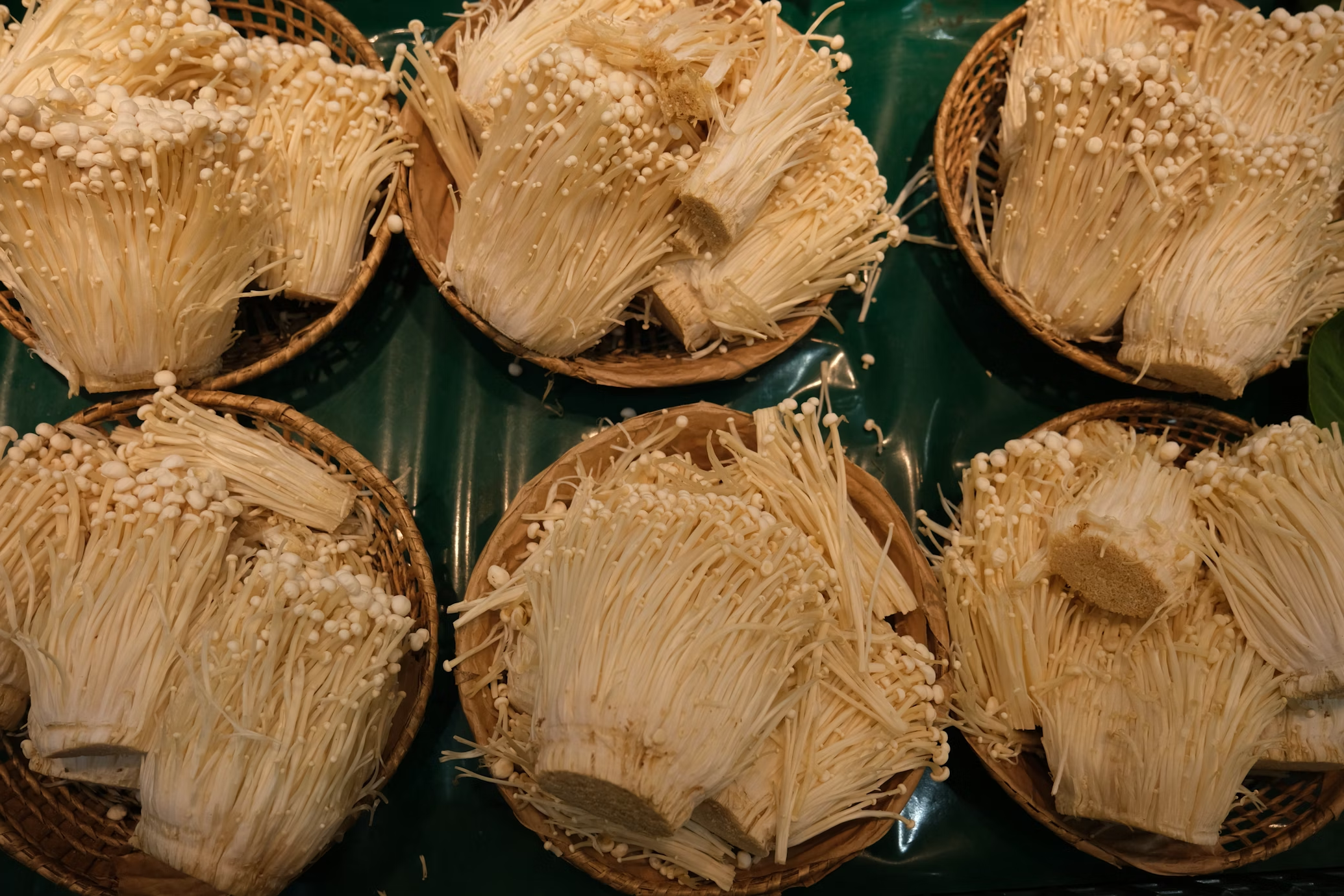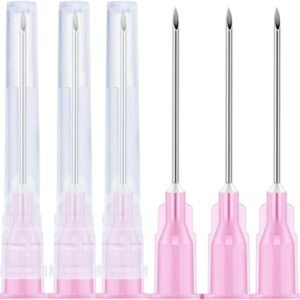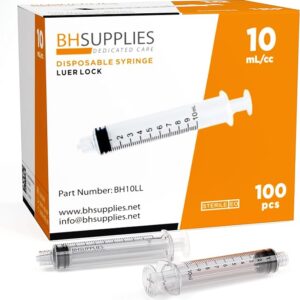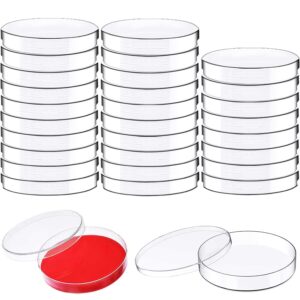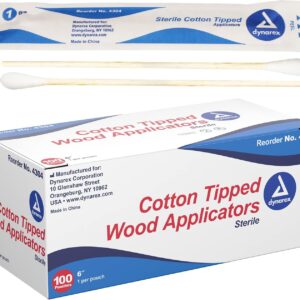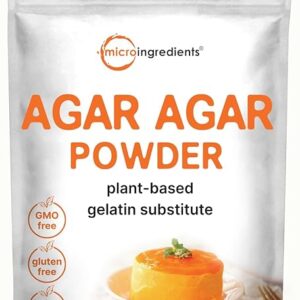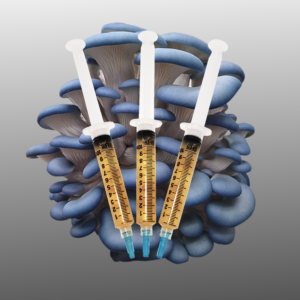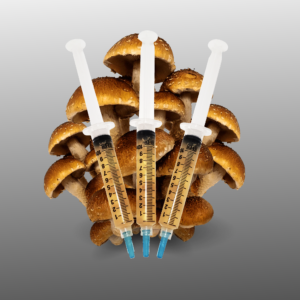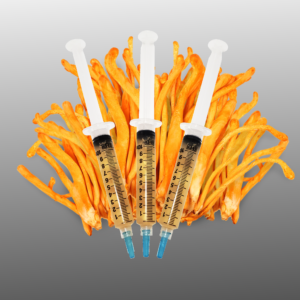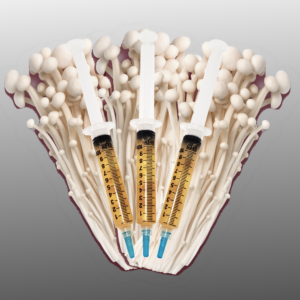Enoki mushrooms, with their delicate appearance and distinct long stems, offer a range of health benefits that have piqued the interest of health-conscious individuals. As an immune booster, Enoki mushrooms are rich in bioactive compounds, such as beta-glucans, that have been associated with enhanced immune system function. They can help the body’s natural defense mechanisms to ward off illnesses and infections. Moreover, Enoki mushrooms are an ally for weight management. They are low in calories and fat while providing essential nutrients and dietary fiber. The fiber content helps with appetite control and contributes to a feeling of fullness, making them a valuable addition to a balanced diet for those looking to manage their weight effectively. Whether you’re focused on strengthening your immune system or maintaining a healthy weight, Enoki mushrooms offer a tasty and nutritious solution.
Enoki mushrooms, also known as Flammulina velutipes, primarily grow in the wild on decaying hardwood trees, particularly the stumps and branches of trees like the mulberry, ash, and persimmon. Here’s a simplified explanation of how Enoki mushrooms grow in their natural habitat:
- Colonization of Dead Wood: Enoki mushroom mycelium, the vegetative part of the fungus, colonizes dead or decaying wood. This mycelium consists of a network of fine, thread-like structures that spread throughout the wood.
- Fruiting Body Formation: When conditions are suitable, Enoki mushrooms form their fruiting bodies, which are the edible parts of the mushroom. These fruiting bodies typically appear as clusters of long, slender, white stems with small caps at the top.
- Habitat and Environment: Enoki mushrooms prefer cooler temperatures and are often found in temperate forests. They tend to grow during late fall and winter in regions with cold winters and humid conditions.
- Light and Fresh Air: In the wild, Enoki mushrooms often prefer growing in areas with indirect light and exposure to fresh air. They may also require some cold shock to initiate fruiting, which can be triggered by a drop in temperature.
- Spore Dispersal: Once mature, Enoki mushrooms release their spores from the caps, which can be carried by the wind to potentially colonize other suitable dead wood in the vicinity. This helps perpetuate their lifecycle in the forest.
Cultivating Enoki mushrooms in a controlled environment, such as indoors, can be quite different from their wild growth, as it involves simulating the necessary conditions and controlling factors like temperature, humidity, and light. Enoki mushrooms are not only appreciated for their potential health benefits but also for their unique appearance and mild, delicate flavor.
Enoki mushrooms, also known as Flammulina velutipes, can be cultivated both indoors and outdoors. Cultivating them at home or in a controlled environment allows you to enjoy these delicate, flavorful mushrooms. Here’s a basic guide on how to grow Enoki mushrooms:
Materials You’ll Need:
- Enoki mushroom spores or culture.
- A growing substrate (usually a mixture of hardwood sawdust, bran, and water).
- Sterile containers or bags for the substrate.
- A temperature-controlled space (around 45-55°F or 7-13°C).
- Light source (indirect light is ideal).
- A humidifier or means to maintain high humidity (around 90%).
- A clean and sterile work environment.
Step-by-Step Guide:
- Prepare the Substrate:
- Mix the growing substrate components (sawdust, bran, and water) thoroughly. Ensure the mixture is well-moistened but not overly wet. Sterilize the substrate in containers or bags using a pressure cooker or autoclave to eliminate contaminants.
- Inoculate the Substrate:
- In a clean and sterile environment, introduce Enoki mushroom spores or culture into the sterilized substrate. This can be done using a syringe or by adding a small piece of culture.
- Incubation Period:
- Seal the containers or bags and place them in a temperature-controlled space, typically between 45-55°F (7-13°C). Enoki mushrooms thrive in cooler temperatures. During this phase, the mycelium will colonize the substrate, which may take several weeks.
- Light and Fresh Air:
- Once the mycelium has colonized the substrate, expose the growing containers or bags to indirect light and fresh air. While Enoki mushrooms are not phototropic, they do require light and air for normal development.
- Fruiting and Harvest:
- Maintain the temperature and high humidity (around 90%) to encourage the formation of fruiting bodies. Enoki mushrooms will develop long, slender stems and small, convex caps. Harvest the mushrooms when they are mature, but still white in color, for the best flavor and texture.
- Multiple Flushes:
- Enoki mushrooms are known for their ability to produce multiple flushes. After the initial harvest, continue to maintain the temperature and humidity to encourage additional crops.
Growing Enoki mushrooms at home allows you to enjoy these delectable fungi, known for their mild, sweet flavor. By carefully controlling the environment, you can ensure a steady supply of fresh Enoki mushrooms for your culinary creations.
-
100 Pack -18Ga 1.5inch(38mm) Dispensing Needles with Luer Lock, Individually Packaged
-
10ml Luer Lock Tip Syringes (No Needle) – Sterile, Individually Wrapped – 100 Syringes
-
30 Pack Plastic Petri Dishes with Lids, 90 x 15mm
-
6-Inch Sterile Cotton Tipped Applicators 1 Box of 100 Pouches, 1 per Pouch
-
Agar Agar Powder, 1lb
-
Blue Oyster Liquid Culture
-
Chestnut Mushroom Liquid Culture
-
Cordyceps militaris Liquid Culture
-
Enoki Mushroom Liquid Culture

